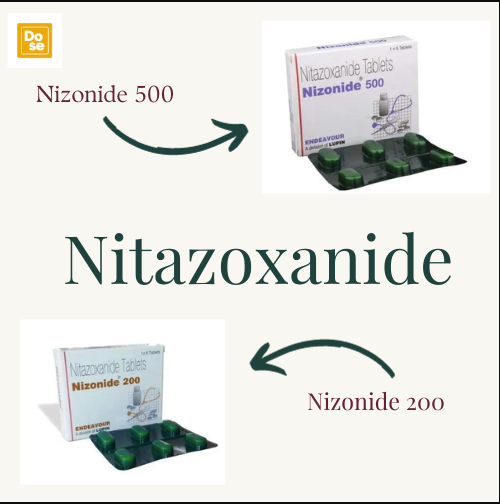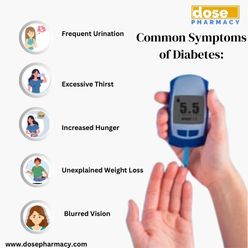Nitazoxanide is an antiparasitic and antiviral medication widely used for treating various infections, including protozoal diarrhea, parasitic infestations, and viral infections like influenza. As an essential treatment option for conditions such as giardiasis and cryptosporidiosis, understanding how long nitazoxanide stays in your system is important for its effective use and safety. This blog will explore nitazoxanide’s mechanism of action, absorption, metabolism, half-life, and factors influencing how long it remains in the body.
What Is Nitazoxanide?
Nitazoxanide 500 mg belongs to a class of medications called thiazolides. It is mainly prescribed to treat infections caused by protozoa, helminths, and viruses. The drug has gained popularity for its broad spectrum of activity, working against various gastrointestinal parasites and other infections. Commonly marketed under brand names such as Alinia, nitazoxanide is available in tablet and liquid suspension forms.
Initially approved for treating protozoan infections like cryptosporidiosis and giardiasis, its use has expanded to include treatment of viral infections such as rotavirus and norovirus in pediatric patients, as well as investigational use for respiratory viruses, including COVID-19.
How Does Nitazoxanide Work?
Nitazoxanide works by inhibiting certain enzymes involved in the energy production of pathogens. By disrupting anaerobic energy metabolism in susceptible organisms, nitazoxanide 200 mg starves the parasites or viruses of the energy they need to survive and replicate, eventually killing them.
The drug’s broad activity makes it useful in treating infections caused by a variety of pathogens, including Cryptosporidium parvum and Giardia lamblia, which are responsible for significant diarrhea cases globally. Nitazoxanide’s antiviral properties arise from its ability to interfere with viral replication, making it a promising treatment for viral infections like influenza and rotavirus.
Absorption and Metabolism of Nitazoxanide
Once ingested, nitazoxanide is rapidly absorbed in the gastrointestinal tract. After absorption, it undergoes extensive metabolism in the liver, where it is converted into its active metabolite, tizoxanide. Tizoxanide is the compound primarily responsible for the therapeutic effects seen in patients.
Nitazoxanide reaches peak plasma concentrations within 1 to 4 hours after administration. The drug is highly bioavailable when taken with food, which enhances its absorption and makes it more effective. This is why healthcare providers typically recommend taking nitazoxanide with meals for optimal results.
How Long Does Nitazoxanide Stay in Your System?
The length of time nitazoxanide stays in your system depends on its pharmacokinetics, including its half-life, metabolism, and elimination routes.
Half-Life of Nitazoxanide
The half-life of a drug is the amount of time it takes for its concentration in the bloodstream to decrease by half. Nitazoxanide itself has a short half-life of about 1 to 1.5 hours, but this isn’t a major concern because its active metabolite, tizoxanide, is the main player in its therapeutic effects.
The half-life of tizoxanide is approximately 7.3 hours, meaning that it takes this long for the levels of tizoxanide in your body to reduce by half. After about five to six half-lives, a drug is generally considered to be eliminate from the body. Therefore, it would take around 36 to 44 hours for tizoxanide to be mostly clear from your system.
Elimination of Nitazoxanide
Nitazoxanide and its active metabolite tizoxanide are primarily eliminated through the feces, with a smaller portion excreted in the urine. Approximately two-thirds of the drug is excreted in the bile and eliminated through the gastrointestinal tract, while the remaining one-third is cleared via renal excretion.
Given that the drug is mostly eliminate in the feces, this minimizes the burden on the kidneys, making it safer for patients with mild to moderate renal impairment. However, those with severe liver or kidney problems may need dose adjustments to ensure the drug is eliminate properly.
Factors Affecting How Long Nitazoxanide Stays in Your System
Several factors can influence how long nitazoxanide remains in your system:
1. Age
Elderly patients or young children may metabolize drugs differently due to varying organ functions. For instance, older adults may have slower liver metabolism and kidney function, which can prolong the drug’s clearance from the body. Pediatric patients, on the other hand, tend to metabolize drugs more quickly.
2. Liver Function
Since nitazoxanide is metabolize in the liver, individuals with liver impairment may take longer to clear the drug from their system. This can lead to increased drug levels and a longer duration of action, which might require dose adjustments.
3. Kidney Function
Although most of nitazoxanide is eliminated through the feces, a portion is excreted in the urine. Individuals with compromised kidney function may experience delayed clearance of the drug, causing it to stay in the system longer.
4. Food Intake
Nitazoxanide is better absorb when taken with food. If taken on an empty stomach, the drug’s bioavailability may be reduce, leading to lower drug levels in the bloodstream and potentially faster elimination.
5. Dosage
Higher doses of nitazoxanide may take longer to clear from your system than lower doses. The standard dosing regimen for adults treating parasitic infections is typically a 500 mg dose take twice daily for 3 days, but dosing may vary base on the infection being treat.
Drug Interactions
Certain medications may affect how long nitazoxanide stays in your system by altering its metabolism. For instance, drugs that affect liver enzymes (such as CYP450 inhibitors or inducers) can either increase or decrease the clearance of nitazoxanide. Always inform your healthcare provider of any medications or supplements you are taking to avoid potential interactions.
Side Effects and Considerations
Although nitazoxanide is generally well-tolerate, it may cause side effects in some individuals. Common side effects include nausea, headache, abdominal pain, and diarrhea. These side effects are typically mild and resolve after discontinuing the medication.
In rare cases, more severe side effects like allergic reactions or liver toxicity may occur. If you experience symptoms such as jaundice, severe abdominal pain, or signs of an allergic reaction (e.g., rash, itching, difficulty breathing), seek medical attention immediately.
Conclusion
Nitazoxanide is a versatile antiparasitic and antiviral medication with a relatively short duration in the system. The active metabolite, tizoxanide, has a half-life of approximately 7.3 hours and is mostly clear from the body within 36 to 44 hours after the last dose. However, factors like age, liver and kidney function, food intake, and drug interactions can influence how long nitazoxanide stays in your system.
Always follow your healthcare provider’s instructions regarding dosage and duration of treatment to ensure the best outcomes. If you have concerns about how nitazoxanide may interact with other medications or conditions, consult with your doctor to ensure safe and effective use of this medication.







